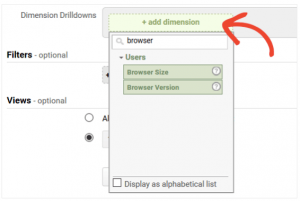
One of the most important, and potentially most difficult, parts of managing an ecommerce website is writing informative and persuasive product descriptions. You have to create an experience online that makes the shopper feel as educated and comfortable with making a purchase as they would in a retail store – and that’s no easy task. There are several important elements that need to be taken into account: providing enough data for a shopper to make an informed purchase decision, using the right keywords to get your product page ranked in search results, and last but not least, writing a description that sells.
So how do you do that?
After all, part of the reason so many consumers enjoy shopping online is for the convenience. They don’t want to be bogged down with pages of text just to purchase one pair of shoes, for example. However, they do want to be ensured that these shoes are high quality, fashionable, and comfortable. That’s where your product descriptions come in.
What Not to Do
This may be a seemingly obvious point, but never, and I mean never, copy and paste the manufacturer-provided product description onto your product page. Certainly use it as a guide to make sure you emphasize important points, but you also need to make the description original and in the voice of your business.
There are many ecommerce managers out there that utilize this “quick fix,” and this tactic is a surefire way to get your business on Google’s bad side. Google will penalize you for having non-unique or duplicated content, and either reduce your rankings or have your site banned from search results completely. Moral of the story: just don’t do it.
In order to make your products stand out from those sold by your competitors, you should use the product description as a way to speak about the quality of the item and how it’s unique. Maybe the product is handmade or very rare; either way, make sure you’re conveying this information. It’s a great opportunity to develop and strengthen your brand’s unique voice by showing your passion for your products and services.
Another common bad practice is “keyword stuffing.” Simply repeating a keyword over and over again within your description is not going to improve that product’s search rankings. Try including long-tail keyword phrases that showcase your product’s unique attributes to prevent redundancy. For example, instead of just using the term “jeans” throughout your product description, add some adjectives to describe what these jeans look and feel like.
Consider using a long-tail keyword like “dark wash skinny jeans” to paint the picture of what your customer is going to get if they purchase this product. Sure, there will be an image alongside the description, but you need to tell the story as much as show the story. Also, using these descriptive terms will help you rank better for these phrases and direct qualified traffic to the page.
Enhance the User Experience
Whenever selling a product or service, you always have to put yourself in the mind of your customers. What are they looking to get out of this purchase? How will this make their life easier?
It’s important that your product description is not only persuasive, but interesting and focused on the benefits. Share any unique insights you have, or even include a personal anecdote about how using the product helped you or one of your customers.
Providing detailed product information also has an impact on the visitor’s overall user experience on your website. In fact, 42% of shoppers will abandon an online purchase if there is a lack of product information. That’s a lot of missed opportunities. This doesn’t mean that each product should require 10 minutes of time to read about and understand, but it’s evident that knowledge is power in the minds of consumers.

Take this product page for example; lots of good visuals, and you can see the product from multiple angles. However, look at the title and product description. This company couldn’t take the time to call this product more than just sneakers? The product description is also lacking. Sure, this is a pretty simple purchase to make and it’s a very inexpensive product, but adding information about items to pair these sneakers with or speaking to their quality would definitely improve this page.
Make the Education Process Simple
There are several reasons consumers choose to shop online, and one of those reasons is convenience. Don’t make learning about your products a chore. Formatting your descriptions so that they are easy to digest will ensure your page doesn’t lose the visitor’s interest or get missed entirely.
Test out different formats to see which layout leads to the most conversions. Chances are most consumers will prefer short paragraphs and bullet points as opposed to a more lengthy description.
Think about your user experience reading this blog post. Would you have read down this far if it was a couple of long paragraphs with no headlines? I’m going to guess probably not. However, we can’t make this claim for every product out there, so definitely take the time to test.

Now this is an effective product page! In comparison to the last example, look at the detailed title and description. They used bullet points to explain the features, and a brief paragraph to describe what occasions these shoes would be perfect for. This description not only makes me confident in the quality of the product I am purchasing, it makes me want the product more.
Writing product descriptions can be difficult, as you want to sell your product without sounding too salesy. But it’s important to remember that consumers crave information when it comes to purchase decisions, and product descriptions delivering that are more likely to convert. Don’t just hope that your brand name and images will sell the product on their own; back it up with descriptive keywords that speak to your audience. If you can do these things, you’ll likely see more success on your ecommerce site.
(233)
Report Post






